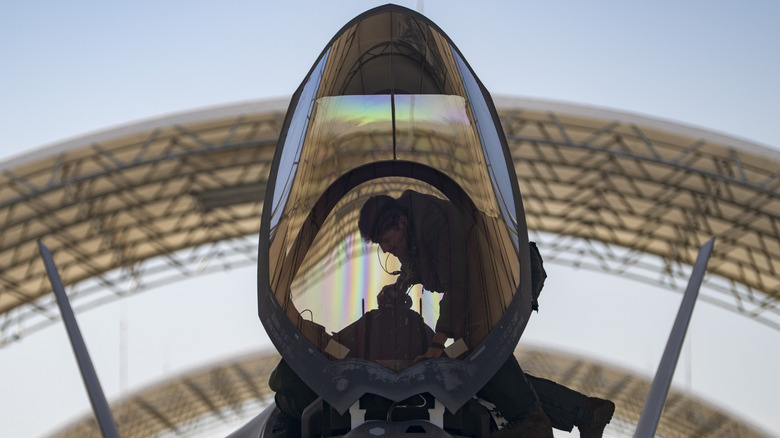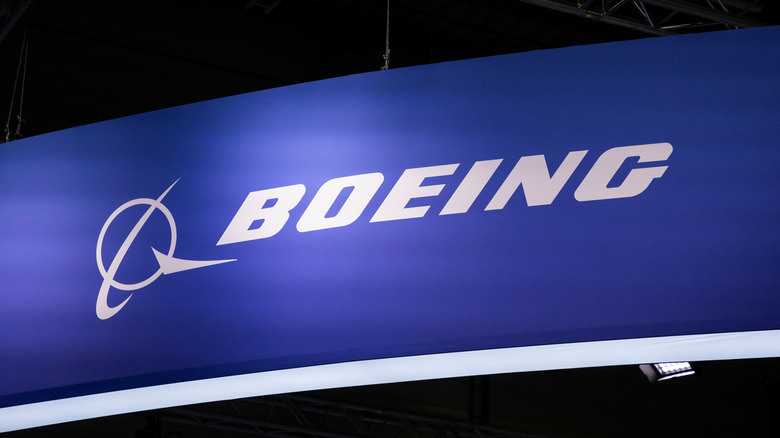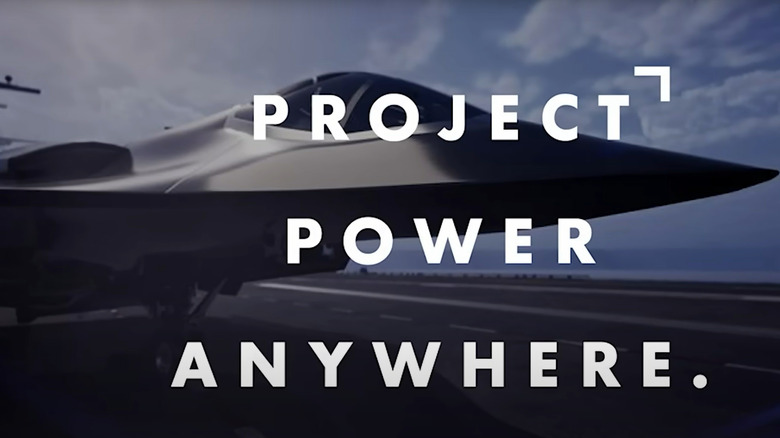Boeing Just Gave Us A Glimpse Of Its Next-Gen F/A-XX Fighter Jet Design
Boeing has released a sneak peek of its designs for the U.S. Navy's next-generation strike fighter, the F/A-XX. Unveiled at the Talihook Symposium in August 2025, the rendering has raised hopes that the sixth-generation fighter project may get off the ground despite a budgetary tug-of-war between the Pentagon and Congress threatening to stop the F/A-XX from ever seeing the skies. And while soaring costs, the rise of alternative unmanned aircraft, feasibility concerns, and budgetary conflicts with the F-47 caused the Pentagon to question the utility of the fighter, Boeing's latest rendering provides a glimpse of what might become the future of the Navy's strike capabilities.
Part of the Next Generation Air Dominance (NGAD) family, the jet is intended to replace the Navy's fleet of F/A-18E/F Super Hornets as its premier carrier-based aerial power projection tool in the 2030s. Currently, Boeing and Northrop Grumman are competing to win the lucrative contract. While much of their respective designs are still under wraps, the Navy has announced that it will require its new fighter to exhibit longer ranges, reach higher speeds, and utilize various advanced technologies, including passive and active sensors, long-range weapons systems, and AI capabilities.
The Navy plans to fly its newest fighter alongside Collaborative Combat Aircraft, uncrewed aircraft that will assist in the F/A-XX reconnaissance and strike missions and could include AI dogfighting capabilities. The Senate earmarked $1.4 billion for the Navy fighter jet in August 2025; however, the striker's future will ultimately depend on the outcome of Congress's upcoming budget talks.
Boeing's big plans
Boeing's latest rendering of its proposed F/A-XX fighter teases the imagination. With all but the nose of the airplane and its single-rider cockpit obfuscated by cloud cover, little can be gleaned about the aircraft's fuselage or wings. However, some details speak volumes regarding Boeing's intentions for the strike fighter.
🇺🇸 Boeing has released a new image of its 6th-generation F/A-XX fighter jet designed for the U.S. Navy.
The futuristic design shows clear similarities to the US Air Force's upcoming F-47. pic.twitter.com/yaDKr9X9i3
— Defence Index (@Defence_Index) August 31, 2025
Commentators have noted its similarities to Boeing's other flagship fighter jet project, the F-47, which won the U.S. Air Force's NGAD contract in March 2025. Besides both teasers being clothed in cloud cover, the two fighters sport single-pilot bubble canopies. Others have highlighted what appear to be canards in both photos. Canards are a type of wing configuration seen on delta-winged 4th-generation European fighters like the Eurofighter Typhoon, Dassault Rafale, and Saab JAS-39 Gripen. Popular for enhancing an aircraft's maneuverability, their inclusion in the F-47 initially raised some eyebrows, as the maneuverability gains typically come at the expense of low observability.
One definitive difference between the two planes will be their engines. According to Aviation Week, the F/A-XX will likely use a derivative engine, while the F-47 will include an adaptive power plant. Due to the lack of concrete details, many have looked to earlier Boeing renderings to understand the company's F/A-XX project. And while they can't offer definitive details, they may point towards Boeing's design priorities. For instance, previous concepts showed a twin-engine, tailless fighter. The lack of a tail is notable, as it typically enhances the aircraft's stealth capabilities while sacrificing some maneuverability. This could explain the potential inclusion of canards to offset the plane's motility issues.
A foggy future
Boeing is one of two companies still competing for the F/A-XX contract after American defense giant Lockheed Martin's designs were rejected in March 2025. The other firm, defense manufacturer Northrop Grumman, has also released renderings of its design, posting a teaser on its website in August 2025. Overlaid with the words "Project Power Anywhere," the Northrop Grumman mockup shows a stealthy next-generation fighter with a deep fuselage, heavy-duty landing gear, and a top-mounted intake. Like Boeing's concept, it sports a single-pilot bubble canopy. Some commentators have noted that the design, like its Boeing counterpart, resembles another of the company's designs, this time the YF-23, Northrop Grumman's version of the F-22.
Whether either design will be added to the Navy's fleet isn't a foregone conclusion. Throughout the summer of 2025, the Pentagon and Congress have debated the merits of the program, with the administration earmarking just $74 million of funding in its 2026 budget request to keep the possibility of an F/A-XX program open. This financial downgrade was made, in large part, to prioritize the Air Force's F-47 program, with the White House questioning whether the U.S. industrial base could support two sixth-generation acquisition programs simultaneously.
Congress, meanwhile, pushed back against these concerns, with the House and Senate defense appropriations bills investing $971 million and $1.4 billion in the program, respectively. As Congress approaches the start of the next fiscal year in October, the fate of the F/A-XX program is sure to be a hot topic of debate, with the Navy officials eagerly awaiting to hear which of the two designs will be selected.


